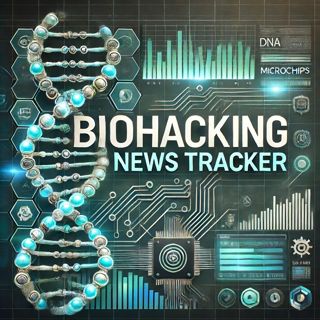
Biohacking Boom: Longevity Solutions, Regulatory Shifts, and Evolving Consumer Trends
The biohacking industry has experienced notable movement in the past 48 hours, with accelerated innovation in longevity and health optimization products, shifting consumer behaviors, and ongoing regulatory scrutiny. Demand for science-backed biohacking solutions continues to rise, spurred by several recent events, deals, and product launches.This week, global wellness brand Next Health announced an expansion into Colorado, bringing its Medicine 4.0 model to Boulder. This approach integrates functional, preventive, lifestyle, and longevity medicine, reinforcing the current industry direction of blending multiple disciplines for comprehensive health optimization. Next Health’s Boulder center is set to open in early 2026, but presale memberships and buzz have already energized the market. The brand’s expansion is interpreted as both a reflection of increased consumer appetite for proactive longevity solutions and a response to growing competition among advanced health centers. Founding memberships are being heavily promoted as demand surges for data-driven, medically supervised biohacking services, a notable pivot from the supplement-heavy strategies of just a year ago.Meanwhile, technology-driven product launches are reshaping the field. Haut.AI, in partnership with Noom, released an AI-powered skin aging model, allowing users to visualize health interventions on skin aging in real time. Japanese start-up TIME TRAVELER launched a supplement using parsley-derived exosomes, touting first-in-market claims for the aging demographic. BASF unveiled climate-adaptive, biotech-powered beauty innovations, emphasizing minimalist rituals and longevity, targeting environmentally conscious consumers. Functional wellness tonics and supplements focusing on the microbiome and collagen regeneration, such as Mitolyn and new mushroom-based drinks, have seen increased popularity and discussion, reflecting consumer demand for evidence-based products promising tangible cellular health benefits.A poll this week suggests that more than 50 percent of Singaporeans are now interested in attending healthy longevity medicine clinics, a significant rise from previous quarters. Market watchers report continued premiumization, with programs like Pvolve and Tally Health’s $5900 offering testing the limits of consumers’ willingness to invest in healthspan improvements.On the regulatory front, the National Advertising Division reviewed claims by Amazentis for Mitopure Cellular Nutrition, supporting some cellular health claims but continuing to pressure the sector to provide data transparency. Product messaging is shifting from anti-aging quick fixes to sustainable, long-term health approaches, as consumers become more skeptical of miracle claims and focus on measurable healthspan gains.Overall, the industry is witnessing rapid evolution, blending science, technology, and luxury as consumer sophistication and regulatory demands intensify. Compared to last year’s more fragmented landscape, leaders are now prioritizing rigorous validation, integrated services, and consumer empowerment in response to both challenges and opportunity.For great deals today, check out https://amzn.to/44ci4hQThis content was created in partnership and with the help of Artificial Intelligence AI
29 Okt 3min

Biohacking Breakthroughs: Unlocking the Science of Personalized Wellness
Over the past 48 hours, the biohacking industry has seen accelerated moves toward scientific legitimacy, new partnerships, and the launch of innovative wellness technologies. Major brands such as Therabody and Bon Charge have introduced scientific advisory boards, signaling their commitment to evidence-based products. Therabody has invested over 10 million dollars in clinical research and established a milestone partnership with the American College of Sports Medicine to boost product validation in athletic performance and longevity. Bon Charge, SWTHZ, and Next Health have also announced new expert collaborations, with Next Health assembling a 14-person council that includes leading wellness innovators. Notably, Ammortal brought Dr. Darshan Shah on board as its chief medical officer to reinforce their focus on longevity, highlighted by their high-end recovery chamber costing 160,000 dollars.This week marked significant new product launches, including Nurecover’s professional-grade cold plunge system for fitness, stress management, and at-home recovery, reflecting the trend toward personalized, accessible biohacking solutions. In beauty and longevity, advanced products such as La Prairie’s Life Matrix Haute Cream and Sisley’s Longevity Essential Serum—priced up to 2,600 dollars per jar—have entered the market, underscoring a merger of luxury branding and epigenetic science. Meanwhile, new therapies like exosome-based skin rejuvenation and non-invasive ultrasound treatments are gaining traction, offering alternatives to traditional invasive procedures and reshaping the consumer experience.The grand opening of the Selah Center in San Diego, which combines advanced bio-regulatory technology with holistic therapies and personalized care, is redefining integrative wellness and aligns with rising consumer demand for individualized protocols targeting root causes at the cellular level. Partnerships with brands like Detox Nation and Cymbiotika at this event highlight the expanding community focus within biohacking.Over the last week, market disruptions have centered on the push for data-driven methods and the rise of evidence-based interventions. There has been a notable shift in consumer behavior with increased attention on longevity, cognitive health, and proactive diagnostics. Consumers are now seeking solutions backed by clinical studies rather than marketing claims. The cost of advanced biohacking products remains high, setting a significant price gap compared to mainstream wellness options, but market leaders are responding by investing in transparency and scientific communication.Compared to last month, regulatory scrutiny is increasing but has not yet resulted in major changes, and supply chain stability remains strong. The competitive landscape is shifting as trusted scientific expertise becomes a market differentiator, leading to rapid product innovation and expanded partnerships across both technology and holistic wellness sectors.For great deals today, check out https://amzn.to/44ci4hQThis content was created in partnership and with the help of Artificial Intelligence AI
24 Okt 3min

Biohacking Booms: Mitochondria, Blockchain, and the Rise of Holistic Wellness Destinations
The biohacking industry has seen a dynamic wave of developments over the past 48 hours, showing both rapid market expansion and evolving consumer expectations. One of the most notable shifts is the surge in holistic, mitochondria-focused supplements like Mitolyn, which continues to gain traction as a top performer in the metabolic support sector. Recent reviews as of October 2025 confirm Mitolyn’s role in supporting sustainable weight loss and deeper metabolic health, citing measurable impacts such as average first-month weight loss of 3 to 5 pounds. Users now seek products that address root causes, like stress and metabolic burnout, rather than short-term fixes, reflecting a well-informed consumer base[2][4].Market expansion is underscored by launches and collaborations. Notably, Molecooles, a new entrant, is set to decentralize biohacking commerce using blockchain technology and MQLS tokens, focusing on empowering women within both wellness and financial spaces. This boldly merges e-commerce, tokenization, and biohacking—potentially changing how niche communities access and pay for wellness innovations[1].The industry has also seen new biohacking centers open globally, with venues like REVĪVŌ’s Vitality Centre in Bali offering on-site longevity treatments, diagnostics, and neuromodulation, reflecting a global embrace of destination-based wellness and longevity clinics. These wellness resorts combine biohacking tech with hospitality, attracting consumers seeking holistic or immersive approaches[7][5].Consumer behavior is shifting toward transparency, stackable product designs, and ingredient clarity. Heightened scrutiny on underdosed blends and misleading labels has pressured brands to be more open and responsive. Repeat purchase rates and social commerce engagement are now central markers of success, and products like Mitolyn benefit from high user satisfaction and positive affiliate reviews[2].Data from the Global Wellness Institute, just released at the 2025 Global Wellness Summit, highlights that wellness tourism—a key biohacking growth sector—recorded nearly 30 percent growth in 2023, with the market projected to reach 1.35 trillion dollars by 2028. Market leaders now emphasize cross-industry collaboration, addressing supply chain complexities and preparing for future regulatory scrutiny as biohacking structurally integrates with mainstream travel and healthcare[5].In comparison to last year, the biohacking narrative is becoming less about extreme celebrity stunts and more about accessible, biology-first innovations. The current landscape is defined by both the demand for scientific grounding and a turn toward emotionally and planetary-conscious offerings, reflecting a broader, more sustainable vision for human enhancement[2][3][5].For great deals today, check out https://amzn.to/44ci4hQThis content was created in partnership and with the help of Artificial Intelligence AI
22 Okt 3min

The Rise of Biohacking: Longevity, Healthcare Transformation, and Global Collaborations
The biohacking industry has experienced a surge in global activity over the past 48 hours, reflecting both rapid innovation and shifting market dynamics. A prominent focus is longevity care, now drawing major venture investments and C-suite advocacy. General Catalyst CEO Hemant Taneja, speaking last Friday, called for health insurance to cover longevity treatments, arguing that this could shift incentives from costly hospital care to preventative biohacking models. However, coverage is still limited, with most insurers excluding emerging supplements and therapies targeting cellular aging. In 2024, General Catalyst acquired Summa Health for 485 million dollars, aiming to transform it into a for-profit hub for innovative care, highlighting the growing interest in realigning health systems with biohacking principles.Internationally, the Zenos Health Summit begins October 23 in Riyadh, uniting world leaders in biohacking, longevity, and AI-driven health. The three-day summit is seen as a launchpad for new partnerships and is expected to preview transformative protocols. Saudi Arabia’s Vision 2030, which fuses biotech and ancient medicine, positions the country as a testbed for large-scale performance and regeneration initiatives. Likewise, the upcoming Global Wellness Summit in Dubai promises to showcase breakthroughs in treatments and biohacking approaches this week.Product launches remain brisk. In Asia, Lévive Labs, specializing in ingestible beauty supplements with clinical ingredients such as marine collagen and antioxidant melon extracts, is expanding operations in Singapore and Malaysia. The company reports robust reception and is forming partnerships with sports and skin care brands, an example of the industry’s cross-market integration and influencer-centric growth. Retail expansion and conference plans for 2026 are already in motion, indicating expectations of sustained consumer demand and resilience in the supply chain.Recent clinical advice continues to shape consumer behavior, encouraging diets high in polyphenols for brain health and moderation in processed foods. The supplement market, especially for weight loss and cognitive enhancement, remains saturated with stimulant-based options, but there are clear signs of consumer movement toward ingredient transparency and scientifically validated claims.Overall, compared to prior months, the biohacking industry is witnessing increased market confidence, strategic healthcare realignment, and widespread international cooperation, despite ongoing regulatory uncertainties around insurance coverage and product safety. The next week will likely set new benchmarks for both scientific and commercial momentum in the sector.For great deals today, check out https://amzn.to/44ci4hQThis content was created in partnership and with the help of Artificial Intelligence AI
21 Okt 2min

Biohacking Boom: Longevity Science, Cutting-Edge Wellness, and the Global Expansion of the Biohacking Industry
The global biohacking industry is undergoing rapid evolution, marked by high-profile events, new product launches, international expansion, and heightened interest from both consumers and institutional partners. This week, the Zenos Health Summit 2025 made headlines as Riyadh prepares to host the Middle East’s first major gathering focused on longevity science and biohacking from October 23 to 25, bringing together over 70 thought leaders from regions including the US, UK, and Saudi Arabia. This aligns with Saudi Vision 2030, which positions the Kingdom as a global wellness innovation hub, merging traditional healing with artificial intelligence and cutting-edge diagnostics. This summit reflects increased investment and partnerships in the global biohacking ecosystem, with industry pioneers like Gary Brecka and Mark Hyman highlighting integrative, data-driven approaches to health optimization.Emerging competitors are gaining momentum. H2 Global Group from the Czech Republic unveiled its H2 Longevity Center in Ostrava last week, introducing hydrogen therapy as a core biohacking offering to a broad consumer segment. Their approach, combining molecular hydrogen treatments, light therapy, and patented diagnostics, is capturing international interest with expansion plans underway in Europe, the USA, and Asia. They report thousands of existing customers and growing inquiries from new partners, emphasizing personalized, science-based protocols and workplace wellness solutions.In product innovation, FDA activity shapes market direction. The approval of Dermalogica's PRO Pen Microneedling System represents a regulatory green light for new medical-grade devices in skin rejuvenation, expanding the scope of at-home and clinical biohacking treatments in aesthetic medicine. Obagi Medical’s FDA-backed move into fillers signals further integration between beauty, wellness, and medical biohacking.Market disruptions are also visible in consumer trends. Interest is shifting toward holistic, personalized protocols and ecosystem-based care rather than single interventions. There is notable demand for noninvasive, functional solutions targeting longevity, mental balance, and stress reduction. Trending supplements include medicinal mushrooms, lauded for their nervous system benefits and broadening the biohacking product palette.Relative to earlier reporting from 2024, the sector is experiencing accelerated cross-border partnerships, greater regulatory clarity, and a consumer pivot toward scientifically validated, experience-driven offerings. Biohacking leaders are doubling down on partnerships, certified product development, and public education campaigns to address safety, build trust, and expand adoption in a globally competitive environment.For great deals today, check out https://amzn.to/44ci4hQThis content was created in partnership and with the help of Artificial Intelligence AI
20 Okt 3min

Biohacking Boom: Longevity, Tech, and the Mainstreaming of Wellness
Over the past 48 hours, the biohacking industry continues to surge ahead as a sector where wellness, technology, and consumer demand for healthy longevity are converging with unprecedented momentum. The market is increasingly dominated by longevity-focused consumer products, shifting away from the early grassroots, DIY ethic—the grinders—who pioneered experimental implants and mutual aid in community labs. Today, biohacking is more mainstream, with consumers rapidly adopting supplements, peptide therapies, diagnostic technologies, and wellness tourism experiences. While the overall biohacking market is projected to reach over $52 billion by 2026, recent discussions at events like the Longevity Show and upcoming summits highlight a notable acceleration in scientific innovation, corporate investment, and product launches[8]. Companies such as DSM-Firmenich are pushing a three-step solution targeting cellular senescence, signaling a trend toward cellular health interventions[6]. Creatine, once just a gym staple, is now repositioned in the longevity space with evidence supporting broader health benefits, expanding its consumer base[6]. Consumer behavior is marked by a demand for more personalized, evidence-based interventions. The industry has moved from quick-fix claims to emphasizing long-term healthspan and biological age management, with brands shifting messaging accordingly[6]. There is a notable rise in wellness nomadism—luxury travelers integrating longevity science and biohacking into their lifestyles—supported by wellness real estate projects globally[5]. On the regulatory front, direct-to-consumer telehealth clinics that prescribe off-label drugs for anti-aging are proliferating. These clinics, such as Eden and AgelessRx, operate in a regulatory gray area, avoiding traditional FDA oversight and not typically billing to insurance[1]. This model has allowed rapid market growth but also raises questions about safety and accountability. Emerging competitors include both traditional supplement brands repurposing existing ingredients for longevity and new firms like Performance Lab, differentiating themselves with clean-label products[9]. Meanwhile, legacy community labs and grassroots grinders are increasingly overshadowed by tech entrepreneurs and venture capital, though pockets of DIY biohacking persist for marginalized groups seeking bodily autonomy[1]. Industry leaders are responding to current challenges by investing in scientific validation, global partnerships, and lifestyle integration. The Longevity Show, for example, is positioning itself as a hub for innovators, clinicians, and consumers to interact, signaling a more collaborative future for the sector[7]. Compared to previous years, biohacking is now less about fringe experiments and more about scalable consumer health, with a focus on both scientific credibility and lifestyle integration. However, this mainstreaming comes at the cost of the original movement’s communitarian and DIY ethos, as the industry becomes both bigger and more commercial. In this fast-moving landscape, the next major disruptions may come from breakthroughs in cellular therapeutics, microbiome science, or AI-driven diagnostics—areas already attracting significant investment and research attention[6].For great deals today, check out https://amzn.to/44ci4hQThis content was created in partnership and with the help of Artificial Intelligence AI
17 Okt 3min

Biohacking Boom: Longevity Tech Surges with Personalized Solutions and Investor Appetite
Over the past 48 hours, the biohacking industry has seen notable momentum in both market activity and strategic development. Recent assessments project robust growth, with the global longevity and wellness biotech market expected to reach 21.4 billion dollars in 2024 and grow at an impressive compound annual growth rate of 16.5 percent through 2033. Major players like Altos Labs, Rejuvenate Bio, and Calico Life Sciences continue to advance in key areas such as AI-driven drug discovery, senolytics, and biomarker analysis, fueling investment and competition at a record pace.In new developments, Dr. Peter Attia’s biohacking clinic Biograph has publicly launched and announced a second location in New York City. Biograph offers executive-level health optimization services priced at 7,500 dollars per year, targeting tech and business leaders eager to extend their healthspan. Investor interest is high, with backing from venture capitals like Vy Capital and Human Capital, and over 15 percent of clients reportedly finding urgent or life-changing health insights through their membership. Elsewhere, market leaders are responding to demand for personalized, trackable wellness protocols, with consumer behavior shifting toward extreme body tracking and data-driven prevention rather than general wellness approaches.Regulatory uncertainty remains a challenge. Leading radiology associations remain skeptical of some advanced screening services like full-body MRIs, questioning their cost efficiency and impact on longevity. Nonetheless, consumer interest and venture capital flow are undeterred, with new product launches in both diagnostics and natural supplementation trending this week. Supplements like BioVanish, highlighted in current consumer reviews, reflect rising demand for natural weight loss and body transformation solutions.Industry partnerships are also expanding rapidly. Next Health, a growing network of health optimization centers, just launched a world-class Scientific Advisory Council, featuring experts like Dr. Mark Hyman and Dr. Jeffrey Bland, to develop science-based protocols for reversing chronic disease and extending healthspan. Next Health plans to scale to over 100 locations by 2027 as it aims to transform modern, preventive medicine.Compared to recent reporting, industry leaders are now pivoting toward more rigorous data analysis, strategic collaborations, and global expansion, with particular growth in North America and Asia-Pacific. Supply chains remain stable, but the high cost of personalized care and long R and D cycles continue to be a barrier for broad consumer adoption. The biohacking sector is now embracing proactive, biomarker-driven interventions as it meets rising expectations for tangible, personalized results.For great deals today, check out https://amzn.to/44ci4hQThis content was created in partnership and with the help of Artificial Intelligence AI
16 Okt 3min





















